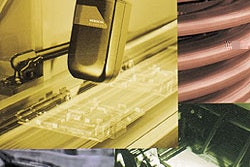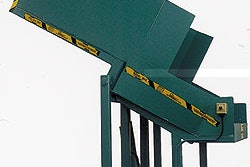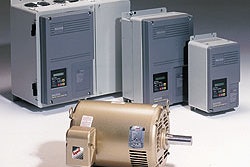Due to the close link between the converting industry and the packaging function, the OMAC Motion for Packaging Working Group chose CMM as a venue for its second meeting of 2001.
The idea was simple: if packagers are unwinding a web of packaging material from a roll on a high-speed wrapping line, they should be able to learn a thing or two about high-speed motion control from the people who wound the material onto a roll in the first place—the converter.
Though it could be argued there are differences in motion demands between packaging and converting, at least one speaker, Bob Martell of P&G, said his company felt they were very similar.
“The equipment uses very similar [control] platforms. There’s no need, from our perspective, to treat the two separately.”
Steve Ford of M&M Mars also commented that converters who adopt open architecture controls can better serve their packager customers, who themselves face “relentless demand from the Wal-Marts and the Costcos of the world,” as P&G’s Martell put it.
“The range of packages we have to deliver is quite diverse,” said M&M’s Ford. “So the raw materials are diverse as well.
It drives up converters’ costs to produce this when they don’t have quick changeover capability.” Open architecture controls supports such fast changeover, he said.
Also at the meeting, Greg Ginnow of Paper Converting Machinery Corp. (PCMC) gave a presentation on how open architecture is incorporated in converting machine design from a converting machinery builder’s perspective. Its latest flexo press is run by a PC control that handles both logic and motion functions, which are programmed using the IEC 1131-3 standard. For motion, the machine contains a SERCOS motion network for servo drive control. The machine is also wired with Ethernet TCP/IP for intranet/Internet communication, and DeviceNet for integration and I/O. And lastly, it has Windows NT-based human-machine interface stations (a defacto standard). The benefits of these open controls, according to Ginnow, are as follows:
• Modular design allows the end user to easily upgrade or swap out controls.
• The design allows PCMC to add/delete machine modules during the design stage; it also lets PCMC use “best-in-class” components.
• The IEC 1131 software standard allows a far greater portion of code to be reused on subsequent machines. It also reduces the need to train engineering staff on a variety of different vendors’ proprietary development languages and tools.
• The precise repeatability of servo drives yields a registration error better than ±0.0005”.
• A built-in “smart” Ethernet hub acts as a firewall between the machine and plant network.
• Automatic messaging can warn of impending breakdown through intranet/ Internet communications.
While Ginnow admitted that most converting machines today are servo-driven, the machine still struck many as a model worth emulating, both for converting and packaging machinery.
“Greg’s discussion was great,” commented panelist Gary Downey of Hershey Foods. “I would like to see more of our packaging equipment suppliers do what Greg’s done.”
See the story that goes with this sidebar: OMAC picks up speed

























